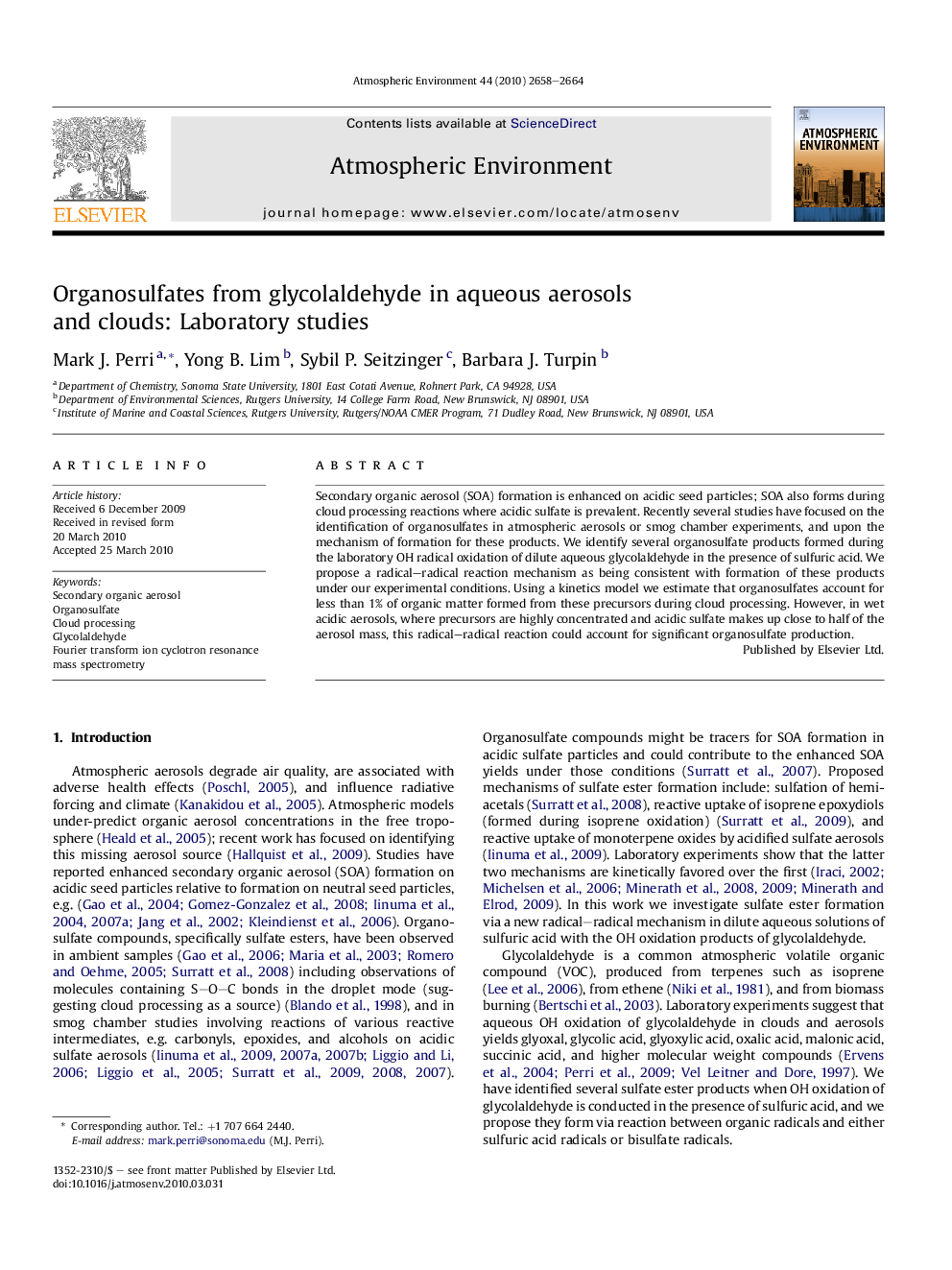| Article ID | Journal | Published Year | Pages | File Type |
|---|---|---|---|---|
| 4440283 | Atmospheric Environment | 2010 | 7 Pages |
Secondary organic aerosol (SOA) formation is enhanced on acidic seed particles; SOA also forms during cloud processing reactions where acidic sulfate is prevalent. Recently several studies have focused on the identification of organosulfates in atmospheric aerosols or smog chamber experiments, and upon the mechanism of formation for these products. We identify several organosulfate products formed during the laboratory OH radical oxidation of dilute aqueous glycolaldehyde in the presence of sulfuric acid. We propose a radical–radical reaction mechanism as being consistent with formation of these products under our experimental conditions. Using a kinetics model we estimate that organosulfates account for less than 1% of organic matter formed from these precursors during cloud processing. However, in wet acidic aerosols, where precursors are highly concentrated and acidic sulfate makes up close to half of the aerosol mass, this radical–radical reaction could account for significant organosulfate production.
